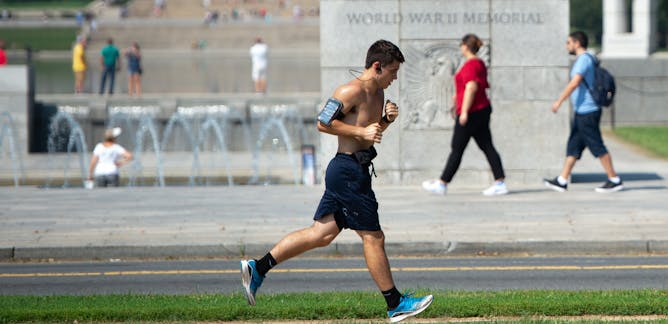
Articles on Heat
Displaying 1 - 20 of 167 articles

The heat comes from everywhere when you’re active outside on hot days – the Sun’s rays, the air around you, the ground and even your own body.

Chillies only give the illusion of heat. Here’s why the Dane’s should chill out.

Exposure to extreme heat can be dangerous for our health – and some people are at greater risk.

A risk expert explains how to read the heat index and interpret extreme heat warnings, and how to stay safe.

A record-breaking heatwave hit Delhi this week, hot on the heels of heat in Asia and Africa. Australians take note, we are not safe here. We need to prepare for heat to hit us just as hard.

Global climates are changing and the world is rapidly warming. Canada’s labour laws must keep pace with the rate of change to protect workers.

Practices such as redlining left marginalized groups in more disaster-prone areas with poorer quality infrastructure − and more likely to experience prolonged power outages.

The state’s largest wildfire on record tore across the heart of Texas cattle country, and more days of strong winds were forecast. A rangeland ecologist explains why the flames spread so fast.

Human societies produce huge amounts of excess heat. Turning it into electricity could play a key role in achieving a net-zero society.

In the worst-case scenario currently being mapped, Earth’s temperature could increase by 4.3°C before 2100. Southern African rhinos will have no possibility of surviving this unless parks act now.

New infrared fabric technology is easy to install, cheap to run and affordable so it has huge potential as a future alternative to heat pumps, especially for retrofit projects.

Shivering actually helps warm our bodies up.

Computer data centres produce vast amounts of heat that often gets wasted - now that’s being harnessed to warm swimming pools and improve overall energy efficiency.

The tournament has proven to be very resilient throughout its history, but its greatest challenges may lie ahead.

An interdisciplinary group of researchers at Penn State ran computer models on two Philadelphia census tracts. The neighborhood with more vulnerable residents was also hotter.

Hot temperatures seem to lead to aggression, both in real life and online.

Embracing hope in the good, alongside recognizing the bad, can reduce eco-anxiety, improve mental health and may just be the key to driving strong and meaningful climate action.

Looking after a baby during extreme heat events takes a little planning and a lot of patience. Here are some practical steps you can take.

One fan died and others reported burns at the Swift concert. And we’re going to see similar incidents at future concerns if we don’t start planning for extreme weather.

More Australians than ever live in rented homes, many of which get far too hot. With summers getting longer and hotter, keeping millions of people cool should be a national housing policy priority.
